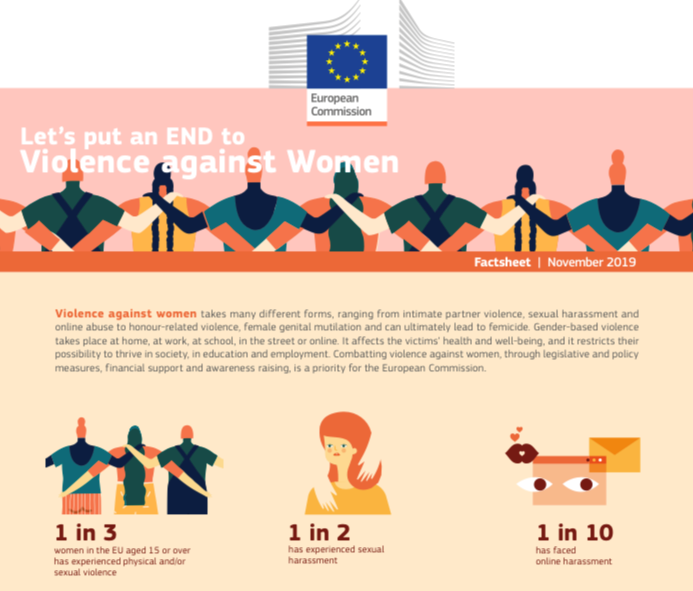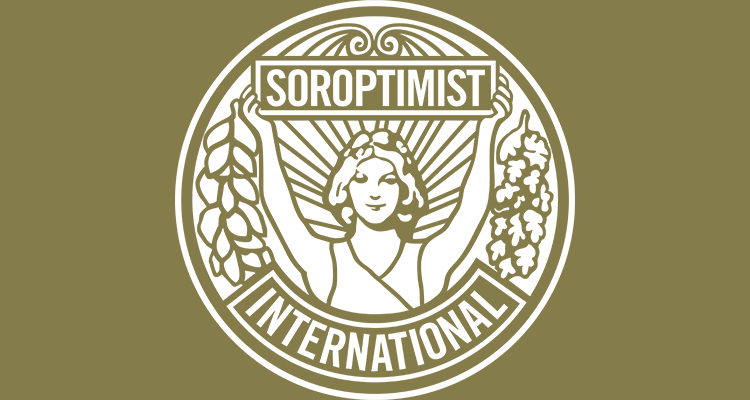Blog by Berthe De Vos, SI UN Representative Geneva.
“All forms of violence are a clear violation of our human right. Whether we speak of crimes against women or domestic violence, prior to 2014, no European framework had set the necessary legal standards. But the need remains, as one out of three women in the European Community experiences physical and/or sexual violence from the age of 15. And within a professional work context, 75% of women experience sexual harassment and 10% of women experience sexual harassment or stalking through the form of technology.*
The Council of Europe Convention on Preventing & Combating Violence against Women and Domestic Violence Treaty, better known as the “Istanbul Convention”, is a benchmark to combat violence against women. The treaty defines violence against women as a human right violation and aims to eliminate all form of violence against women and protect women’s human rights. It is based on the understanding that violence against women is a form of gender-based violence, committed against women because of the simple fact they are women. For the first time a treaty obliges the member states to address all forms of violence and to take actions to prevent violence against women, protect the victims and prosecute the perpetrators.

European Comission Factsheet on Ending Violence Against Women. Click the Image to access full document.
The Convention aims to create a legal framework at pan-European level to protect women against all forms of violence, prosecute and eliminate violence against women and domestic violence. The Convention includes a wide range of measures, varying from awareness-rising and data collection to legal actions to condemn different criminal forms of violence; it aims for a zero-tolerance approach against violence against women and domestic violence. Furthermore, it provides possibilities for the implementation of a wide range of policies between national and governmental bodies involved in prevention, protection, and prosecution. Finally, the Convention created Grevio, an independent expert committee, with its sole purpose to monitor the legal obligations and adaptations of its governing members. The European Court of Human Rights, as the overarching legal pillar, then oversees the implementation of the Convention in the member states.
The Convention was open for signatures on the 11th of May 2011. By 2014, ten countries, including eight member states, had opted in and ratified the convention. With these unified powers, the Convention entered into force as of August 1, 2014.
The Istanbul Convention focuses strongly on prevention, most prominently the prevention of violence against women and girls. It is also aware and acknowledges the need to prevent male violence but has women as its primary focus. The prevention of violence against women has the ability to save lives and increase quality of life. And everyone has a role to play, ranging from the investment in self and other’s awareness-raising actions, media campaigns that shine light on the matter, to confronting stereotypes and traditional inequality. It requires the force of a nation to achieve real gender equality, and the convention sets the standards for the people to bring it into life.
Following prevention, there is protection. Victims and survivors of violence need to be protected by living in a country where there is established and appropriate legal & medical support, as well as procedures to prosecute & indict perpetrators. This support requires, to name a few, changes in educational systems to educate the young minds against violence, provide a 24/7 telephone hotline services, shelters to turn to, legal and psychological counseling, collect data on gender-related crimes and conduct quick and efficient investigations into those crimes. All these efforts will attempt to create a society without gender in-equality and without violence.
Even with solid plans to improve basic human rights, the Convention has had a tough road in receiving the full endorsement of its member in 2011. These years were filled with negotiations and exception clauses. However, as of today, there are 34 states who signed, ratified, and enforced the treaty and 12 states signed without ratification. The difference between a ratified and non-ratified state, is that the latter implements no changes to their legal system and policy measures as a result of signing the treaty.
Unfortunately, nowadays some countries, religious- and ultra-conservative groups have been spreading false interpretations about the concept of “gender” to avoid ratifying or implementing of the commitments of the Convention of Istanbul (e.g. Poland, Hungary, Turkey). Some of these rejections revolve around the too broad definition and/or interpretation of “gender”; or don’t make a distinction with the term “sex”. Others are hesitant to include non-stereotyped gender issues in their educative systems. In essence, the general concern relates to the idea of traditional change and liberal, western lifestyles in their communities. And the invasion of a liberal society could undermine the traditional roles between women and men or even cloud their current patriarchy system. And as a result, they are indirectly opposed to a women’s right to live equal and free from violence in their country.
The Istanbul Convention doesn’t require a member state to use the term “gender” in their legal system if there isn’t an equivalent word for this term, nor if there is a “hidden agenda” to change a tradition or lifestyle of a member state. The Convention aims simply to terminate gender-based violence, with its signing members, signing on to rules and regulation that limit discrimination based on gender or sexual identity, on gender stereotypes, on concepts of masculinity of women’s inferiority, on color, race, language, religion, origin, migrant status, disability, …..
So far, the Convention has made powerful steps in the right direction and has led to significant changes in legal systems across the globe. It continues to raise awareness through social media and educative programs, to create new and better services for victims, more resources and better training efforts and procedures to punish perpetrators. And it will continue to change the mindset so that violence against women becomes an issue of the past.”
*Violence Against Women: An EU Wide Survey, European Union Agency for Fundamental Rights, 2014.


